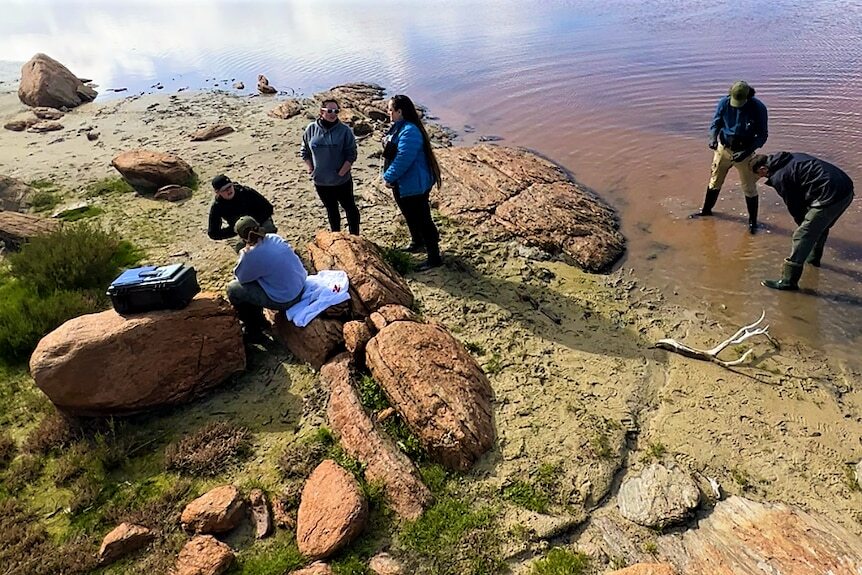14.08.2022

Britney Schmidt hunts for clues about the universe in a West Australian salt lake.
The NASA-funded researcher says the otherworldly landscape, with its pink-hued water and fringing trees, is no mere illusion — it is more like Mars than almost any other location on Earth.
It could even help scientists detect extraterrestrial life on other planets.
"We're out here studying examples of what we think ancient Mars might have been like," she tells the ABC from the shoreline of Lake Warden, near Esperance.
About 20 researchers travelled from America with Cornell University Associate Professor Schmidt as part of the Oceans Across Space and Time project, which is part of the Network for Life Detection, funded by NASA's Astrobiology Program.
They visited several lakes, from Lake Warden and Pink Lake near Esperance to others near Norseman and Salmon Gums.
"Our team is really interested in how hypersaline environments — so those places that have lots of salt in them — not only function as ecosystems today on Earth, but how they preserve a record of what once went on here," she said.
A place like nowhere else on Earth
The ancient Yilgarn Craton — a huge rock mass that covers most of WA — is ideal for learning how to spot signs of extraterrestrial life.
Dr Schmidt said its three-billion-year-old rocks are some of the oldest on Earth and about the same age as those on Mars.
She also said the region's acidic lakes mimicked conditions from ancient Mars — as spacecraft and rover data from the red planet showed evidence of highly acidic lakes in the past.
"By studying examples of what we think may have happened on other planets, we get a chance to understand what those environments may have once been like," she said.
"And [they are] an example of how to approach studying them on those other planets.
"These are old rocks, so the water that's been working through these rocks has been present for a long amount of time.
"That allows us a chance to study both the history and the modern system."
Dr Schmidt also said tapping into rich sources of local knowledge helped strengthen the team's research.
Working with traditional owners
Aunty Donna Beach — a senior ranger, cultural adviser, director and elder at Esperance Tjaltjraak Native Title Aboriginal Corporation — said it was "awesome" to be part of the NASA project.
"There is a lot of dreaming stories that we can tell them [as well as] what we've come to learn over the years, and our ancestors have provided us," she said.
Aunty Donna went with researchers to test lake systems near Salmon Gums.
"We were there to welcome them onto our country, onto our lake systems and also provide cultural protocols," Aunty Donna said.
"We're working together.
"Researching and learning together for this earth and protecting our culture as well."
'It's kind of amazing'
While all researchers on the trip had a common goal, they had different specialities.
Taylor Plattner, a graduate student from Georgia Institute of Technology, was learning how to identify salts in satellite images.
She hoped that could give insights about environmental changes on Mars over time.
"That kind of gives us a hint as what could have happened in the past a long time ago on Mars," she said.
PhD student Cathryn Sephus hoped to get an insight into how living things adapted to toxic conditions, by sampling lake water and measuring trace metals.
Ms Sephus hoped her research would eventually help answer big questions about the universe.
"We know life exists here," she said.
"So if we're going to find out if life exists elsewhere … we'll be able to say, 'This is the conditions for here — perhaps you can apply it to conditions elsewhere' … using Earth as a model system."
But she was also excited to work in a landscape she had only ever studied from afar.
"To be able to see an actual pink lake for my first time, I think it's kind of amazing," she said.
Dr Schmidt said much of the team were early-career researchers who would use the data collected in WA to produce PhD and master's theses once they returned to America.
